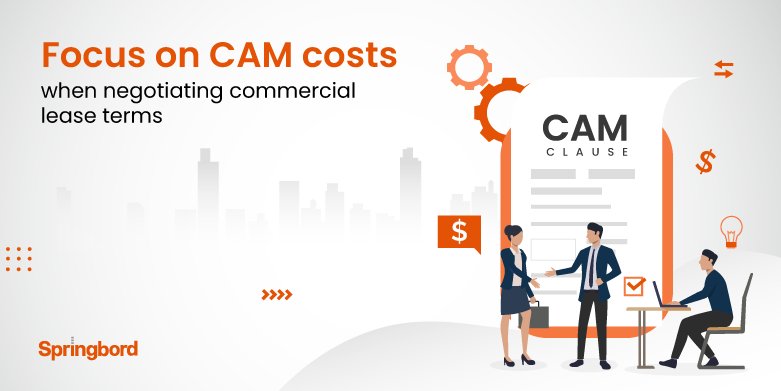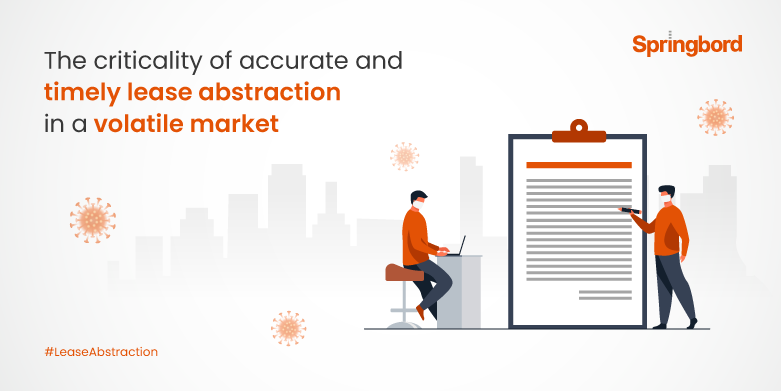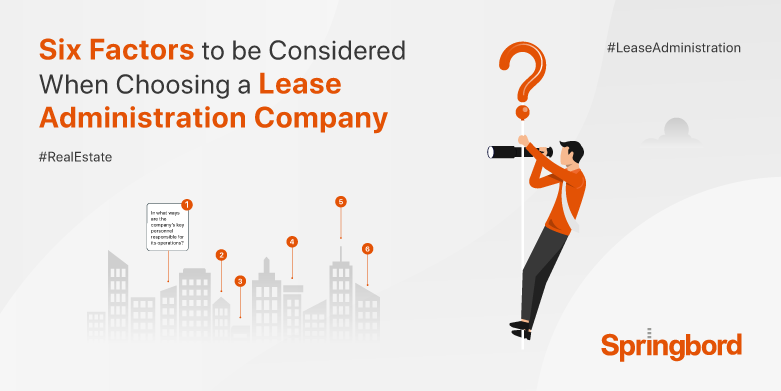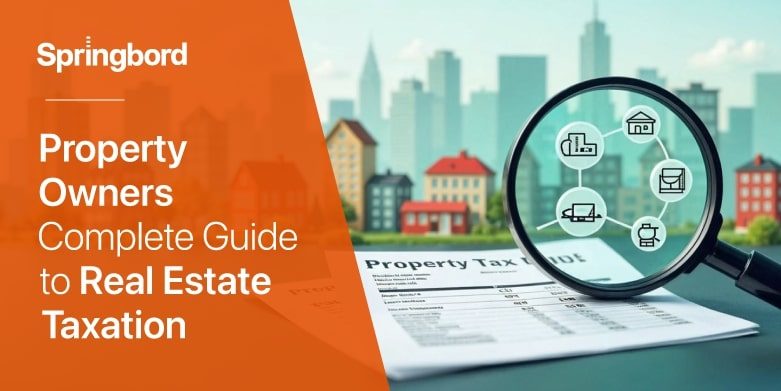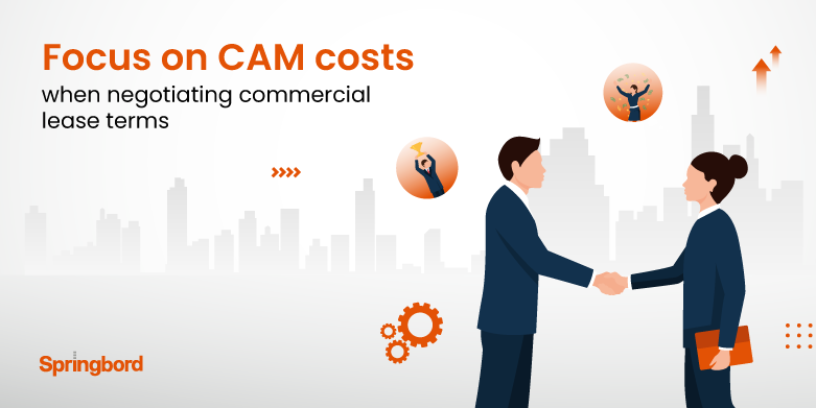 Read time 3 min
Read time 3 minWhether you are looking to rent a space in a large retail space or a smaller strip mall or a building at the heart of a booming business district. Signing a commercial lease is a tedious and intimidating process, especially if it is your first time. There is a lot of information and much has been discussed on how to negotiate a commercial lease. But, in this post, we have highlighted some of the key areas that every business needs to concentrate while negotiating the terms of a commercial lease.
Common area maintenance (CAM) charges remain a critical issue in any commercial lease negotiation. Fixed CAM or CAMs with caps are rare, even though it reduces unpredictability for tenants, this type of CAM cost is not preferred in a commercial lease contract. That is because it can lead to the landlord not being fully reimbursed for the maintenance of the building, which can, in turn, lead to poor upkeep affecting tenants’ occupancy experience.
Pro-rata CAM which falls under triple net lease (or NNN) is a much-preferred type of commercial lease as it allows tenants to fully share the cost of maintenance and repair. The landlord is fully reimbursement for its operating expenses in maintaining the common areas. But NNN leases can be notorious, complex, and generally requires a lot of negotiation before finalization of the lease contract. Usually, it is a good practice to have a lawyer present for these negotiations. However, if you do not have any, here are some critical things to consider when negotiating the lease terms.
Itemize, understand, and negotiate every cost listed under operating expenses
In an NNN lease, a tenant is liable to pay a pro-rata share of CAM expenses also known as operating expenses. The term operating expenses, as you can gather is an umbrella term that is used to group and packages several costs including but not limited to repairs and maintenance, utility bills, property management cost, janitorial services, and staff salaries. You should get a complete laundry list of these expenses that are being included under the head ‘operating expense’. In a lot of contracts, you can ask the landlord to cap some of these expenses and also exclude costs such as major repairs that require structural changes, legal fees, accounting staff salaries, etc. The idea is to analyze whether or not should you share these costs as a tenant. For instance – utility and janitorial expenses are legitimate as tenants would be using those services, however, structural repairs hardly make sense for any tenant to pay for. A landlord would have to take care of those even in the absence of tenants. Because each expense can significantly bump up the overall leasing cost, it is imperative to scrutinize and negotiate every item listed under operating expense.
Insist on adding the CAM audit clause and pay attention to the scope and time frame
A CAM audit clause is not something that is added by default in commercial leases. But it is an effective tool for tenants and therefore they must insist on the inclusion of this clause. Besides that, there are a couple of things that tenants need to be aware of. First and foremost, more often than not even when the landlord agrees to include CAM audit clause, they somehow limit the scope and timeline for the review, restricting the tenants’ rights to conduct a thorough assessment. Depending on the statute of limitations of the said jurisdiction, landlords should allow ample time for the review, so that it can be managed effectively. Ideally, a reasonable timeline is at least 3 years. Secondly, the scope of the audit, in that, what documents/records can a tenant review, and in case of errors/issues identified what would be the course of action for resolution. This is a very critical aspect of the clause. Any unreasonable limitation here would defeat the entire purpose of having an audit clause.
At Springbord we have been helping our clients assess CAM terms and make informed and cost-effective decisions. Don’t let your occupancy cost soar due to hidden operating expenses, talk to us today and we can help identify gaps and arrive at fair pricing that is mutually profitable for landlord and tenants.


